I'm really enjoying this thread – who doesn't like shop pictures? In fact I'm now convinced that an SMC Neander traveling shop tour and cocktail party would be tons of fun! Come on, a bunch of people with shared interest in hand tool woodworking hanging out in our favorite place – the shop, mix in a little good whiskey to liven things up and I gotta believe it would be a great time!
I really appreciate all those who shared pictures of their shops. It's really helpful to see good ideas about how others organizer tools etc. Derek, Glenn, Jim and Roger I really admire your neat organization. I confess I was feeling pretty good about myself until I saw your shops and now realize I've got a long way to go to put things in order etc.
Compelled by the spirit of sharing some pictures my shop: about the size of one car garage with door, window and high ceilings.
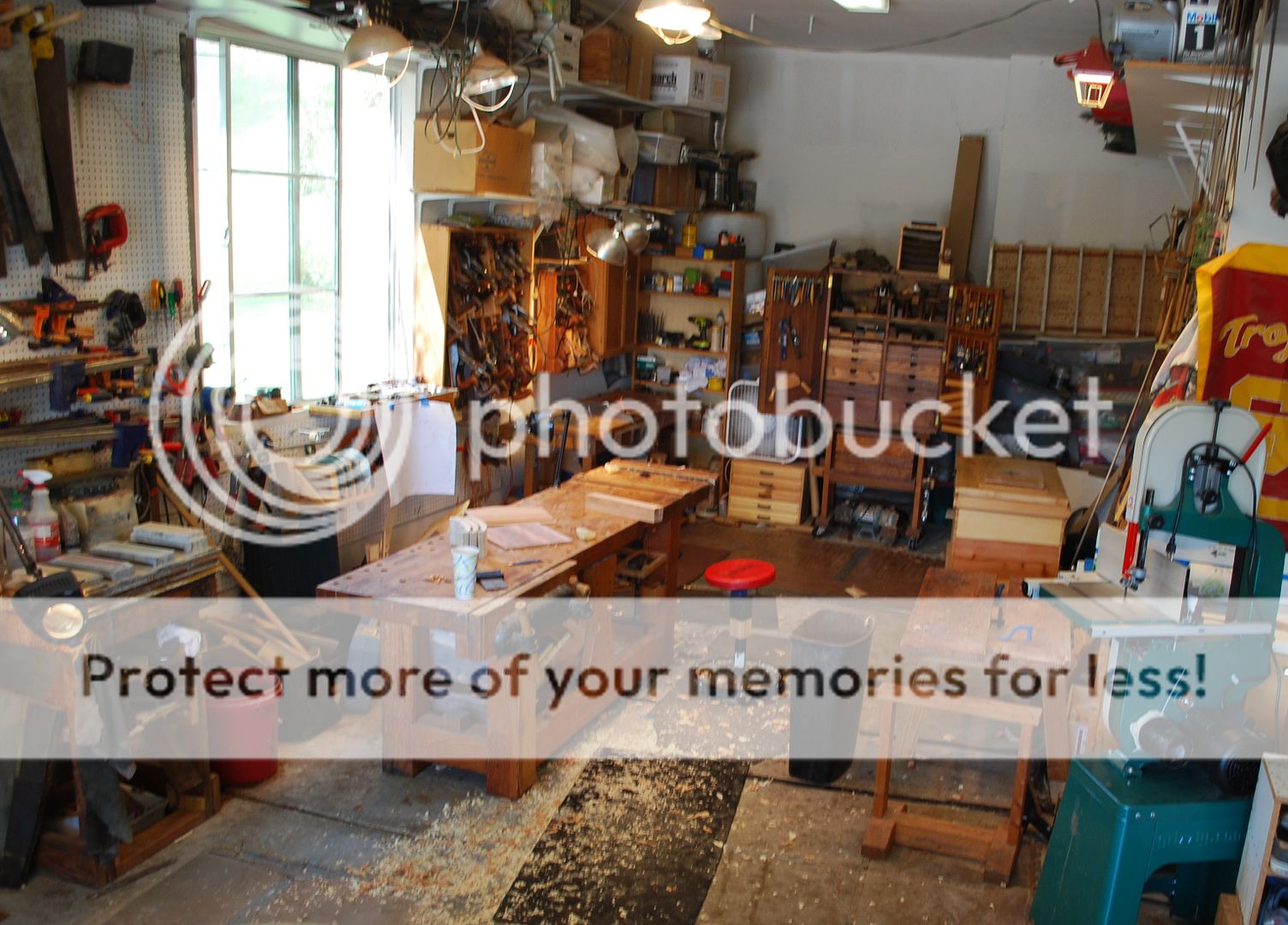
Moving counterclockwise, the eight-foot bench takes up the bulk of the workspace. One of my New Year's resolutions was to clean out the rats nest of scraps, jig etc. accumulating under the bench so build some plastic bins for scrap storage.
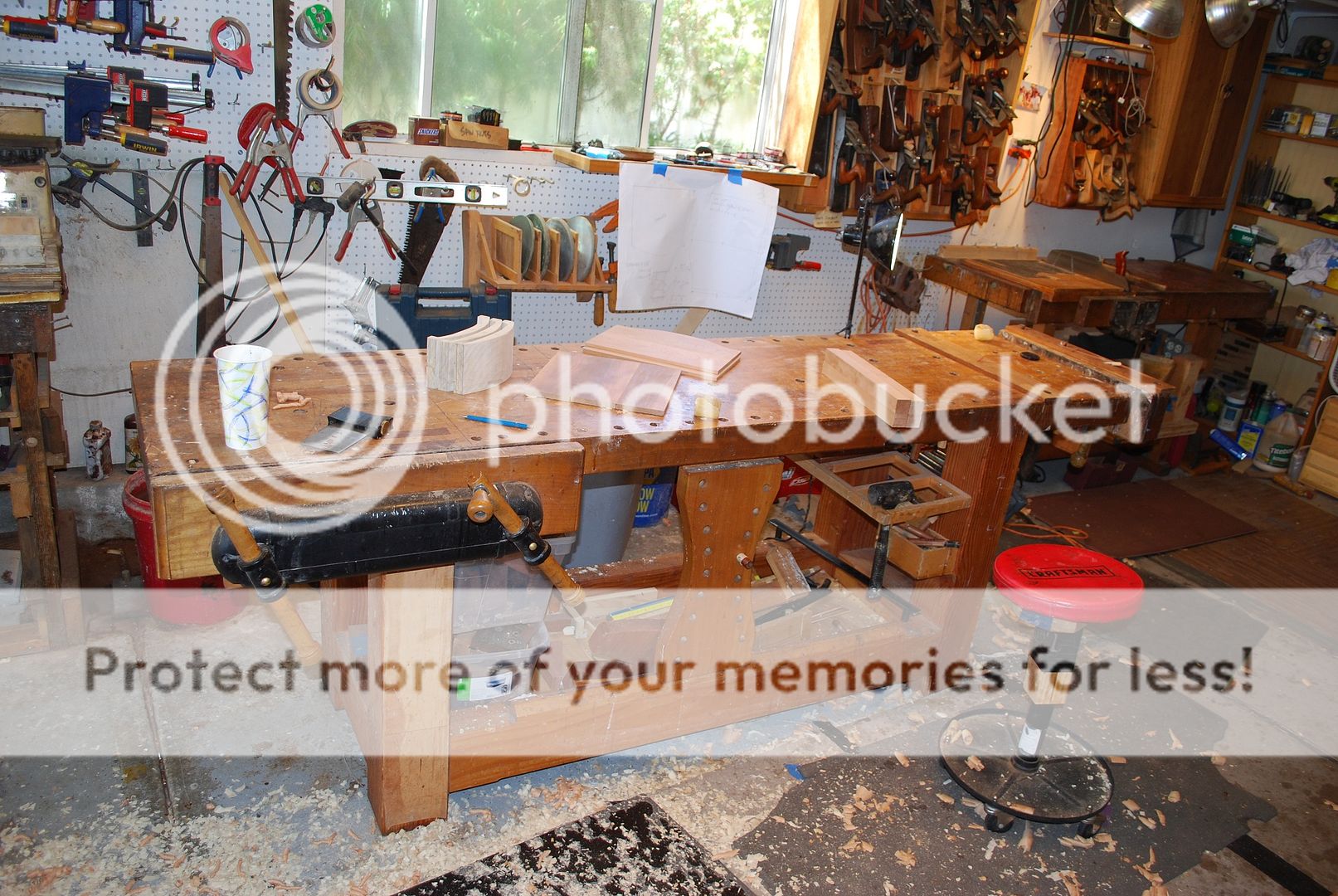
Plane tills above my original workbench from the 1970s, now use primarily for messy stuff like glue ups. Also handy for storing shooting boards, clamp tills etc. below. I consider it luxury to be able to leave the shooting board on this 2nd bench. Fact that I have 2 plane tills is testimony to the idea you always underestimate how much tool storage you're gonna need.

Along that same wall is sharpening station with clamps storage above. For me essential to have sharpening stones always readily available, otherwise I'd probably never sharpen if I had to get them out of storage to use.
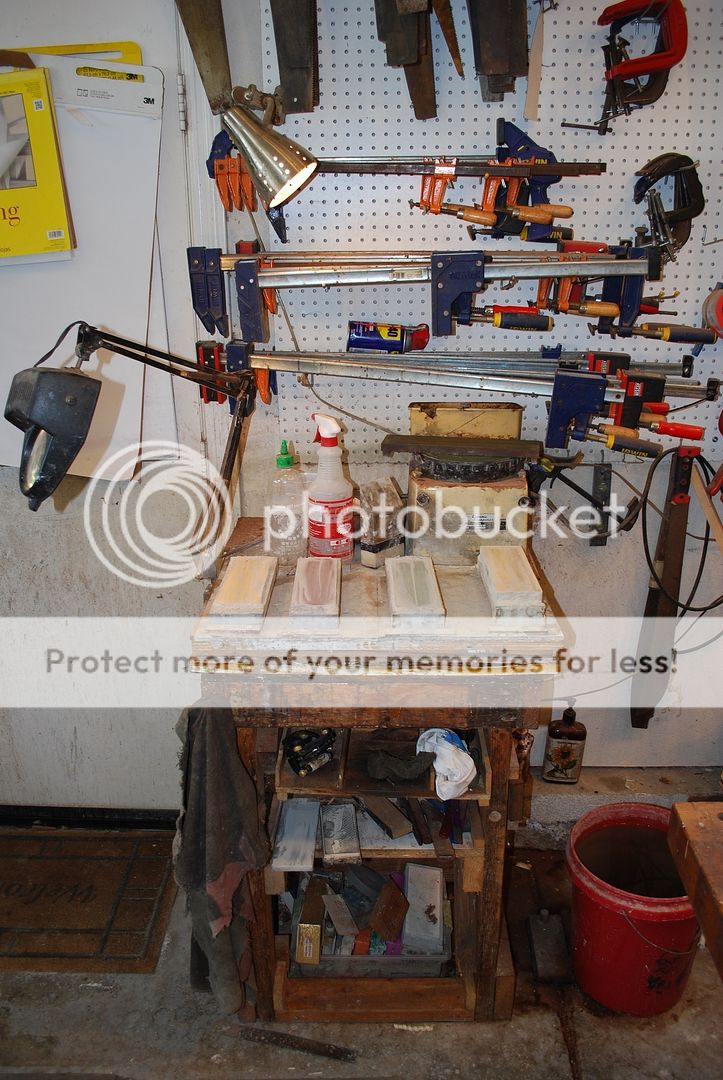
Along back wall is rolling tool cabinet, one of my first projects – can't believe that was 30 years ago. Trays handy for chisels, carving tools. Also where I keep my block, Japanese, joinery planes, scapers, drill bits etc.. Box below holds molding planes and the cabinet on the floor to the left is for screws etc. Small box on top holds sandpaper, and behind it to the right is glue up table.
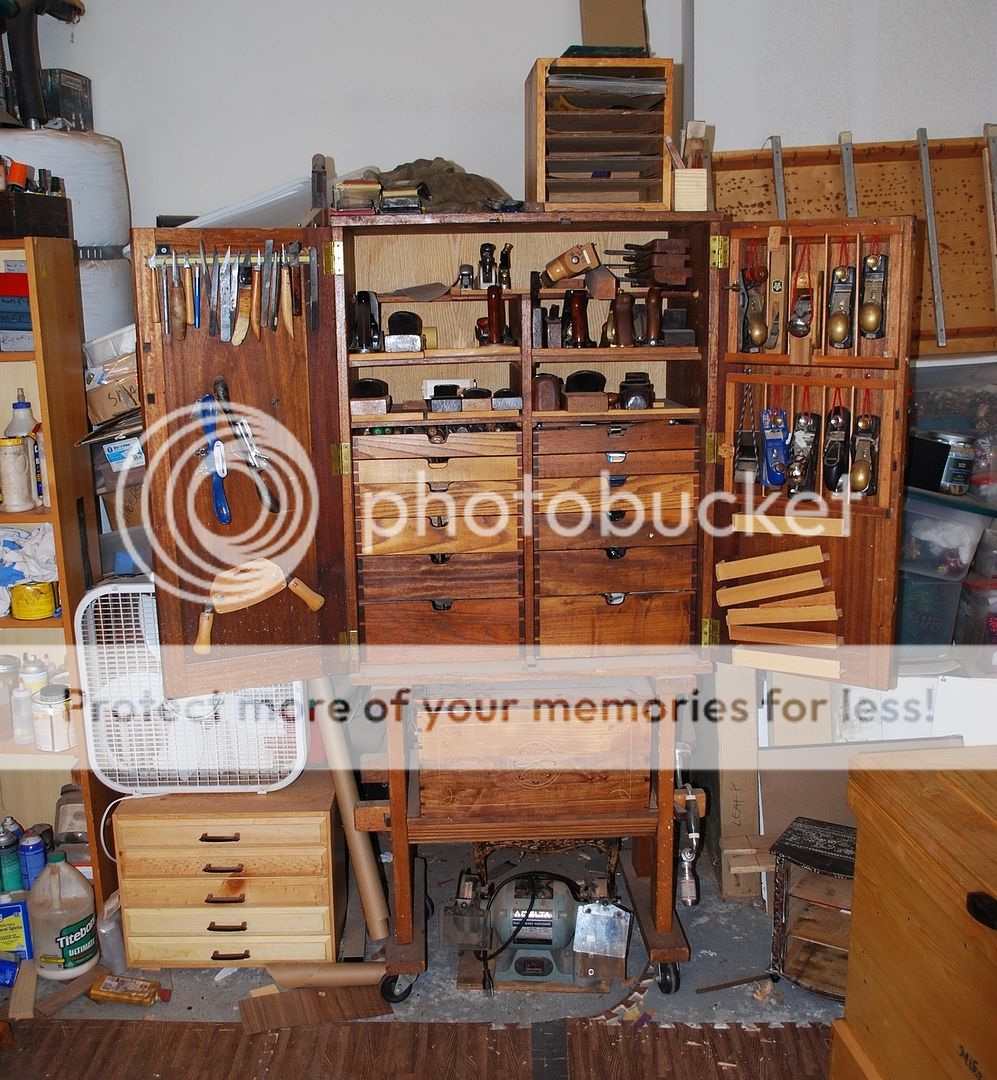
Along the other wall are layout tools hanging from the pegboard and saw tills – full size on the left and joinery saws on the right. Front left is Sharwz anarchist tool chest on rollers. Probably my most used shop appliance is the saw table – for me absolutely essential, and behind it bandsaw and router table I inherited from my uncle that I don't really use very much.
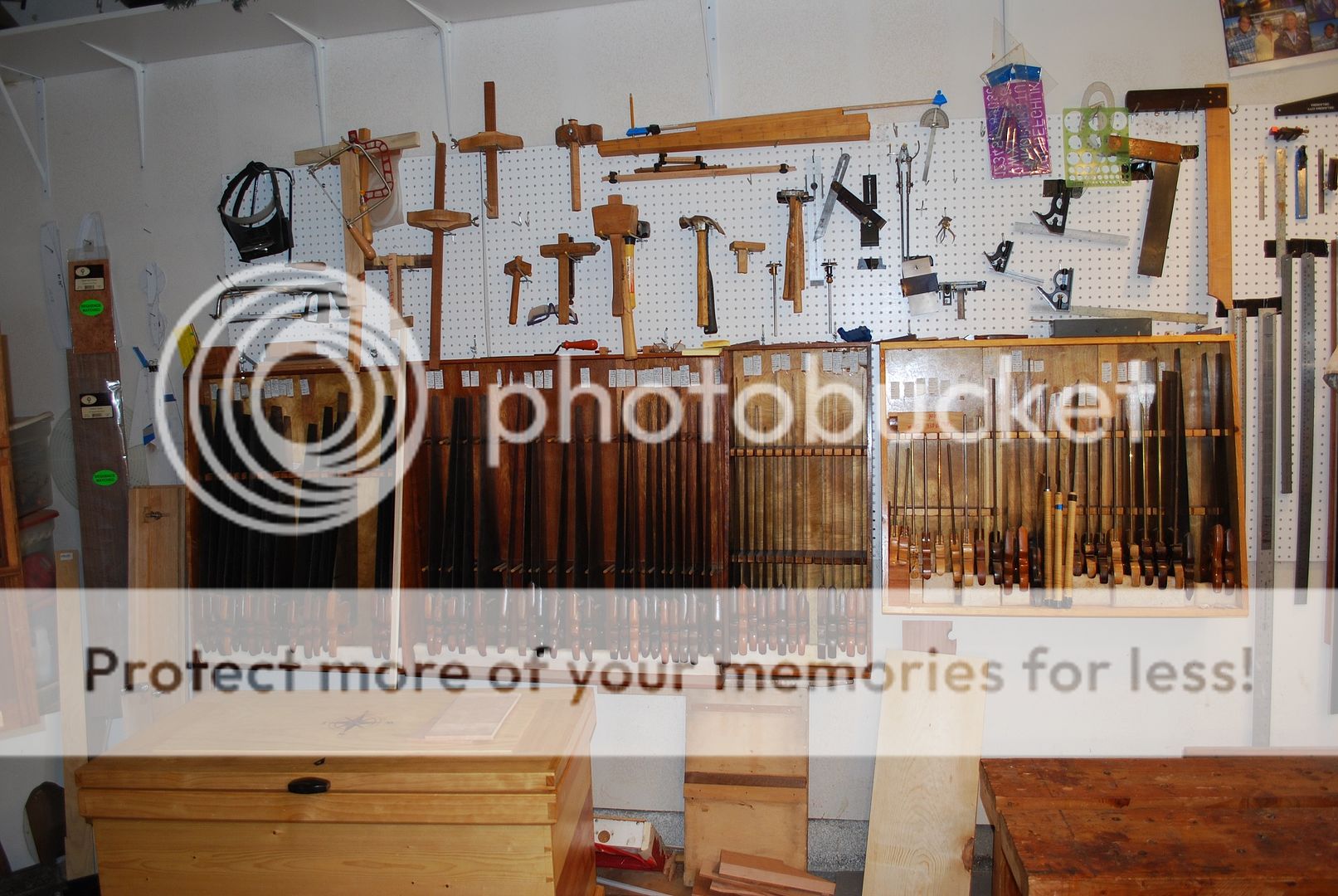
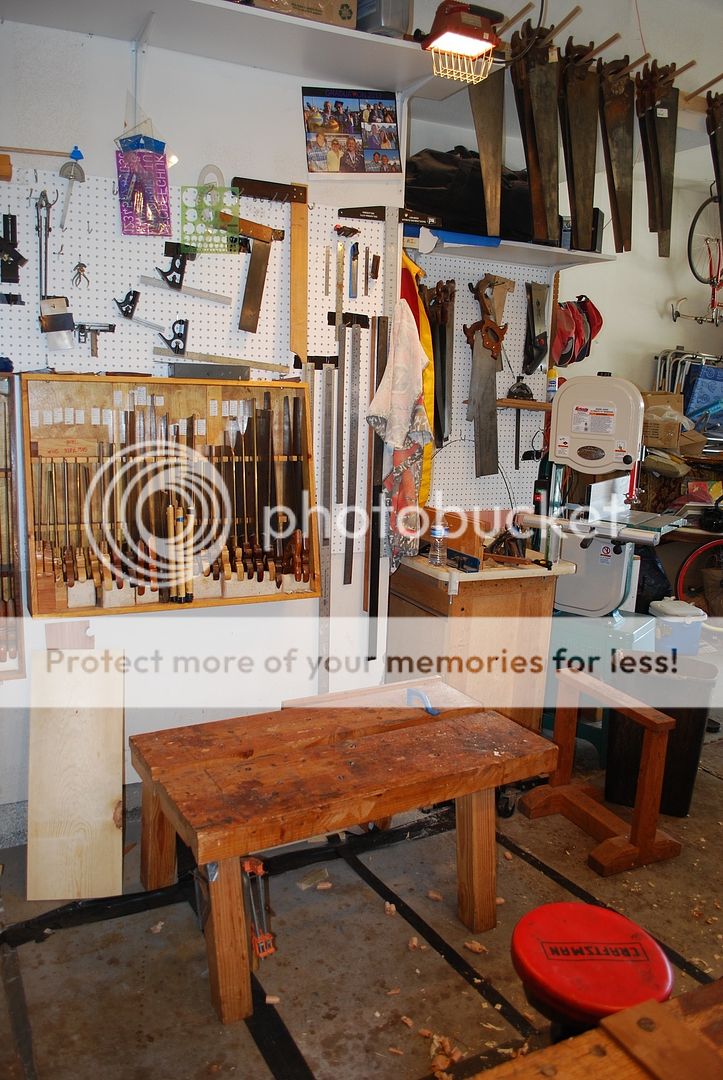

I keep small F clamps on rack under my tail vice.
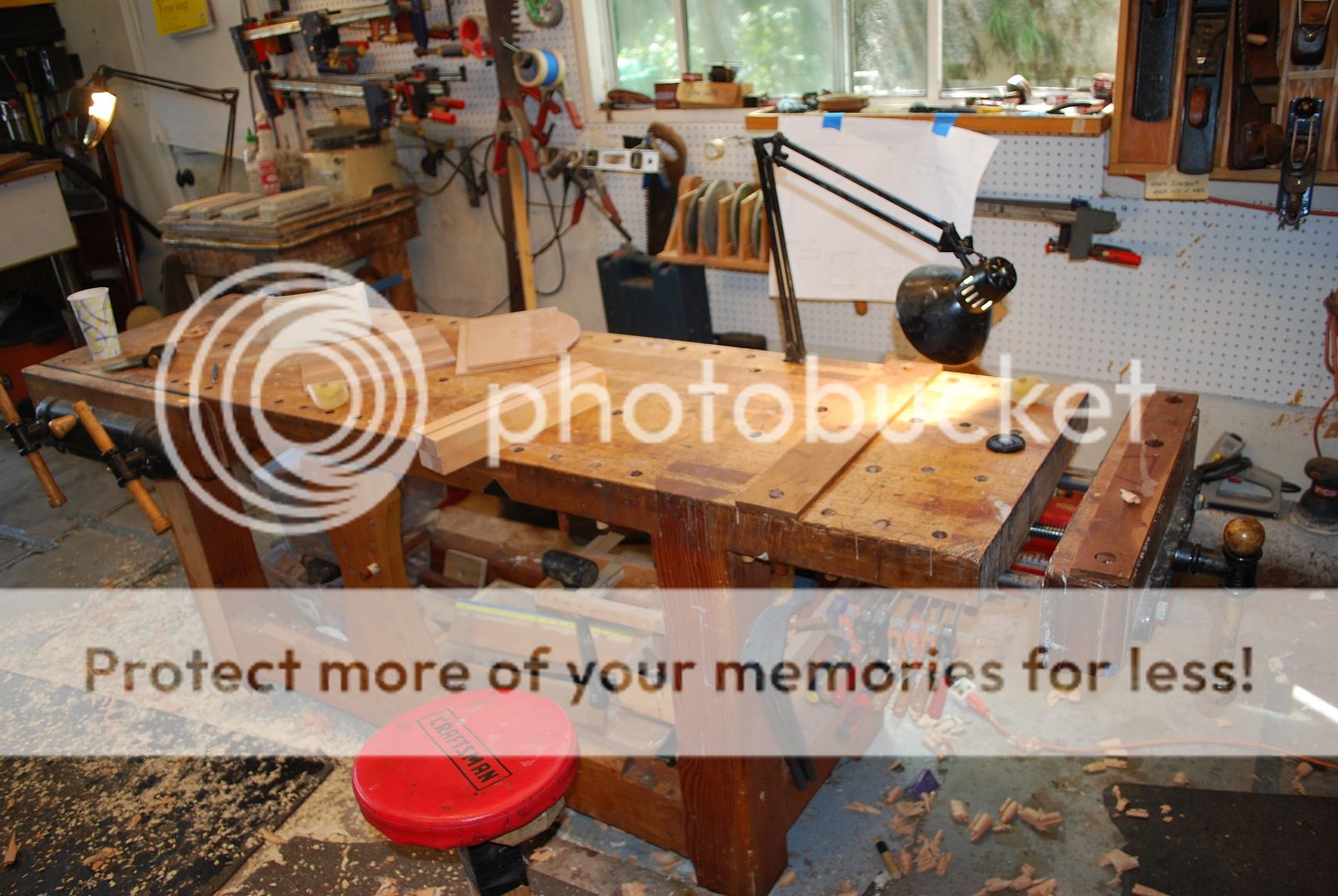
All in all, not a lot of floor space, probably because no TS/stationary power tools etc. I hope those interested in wood woodworking aren't dissuaded by mistaken belief they need big space and expensive power tools to get started. I really enjoy visitors and all are welcome if you're every in the San Diego area.
Cheers, Mike




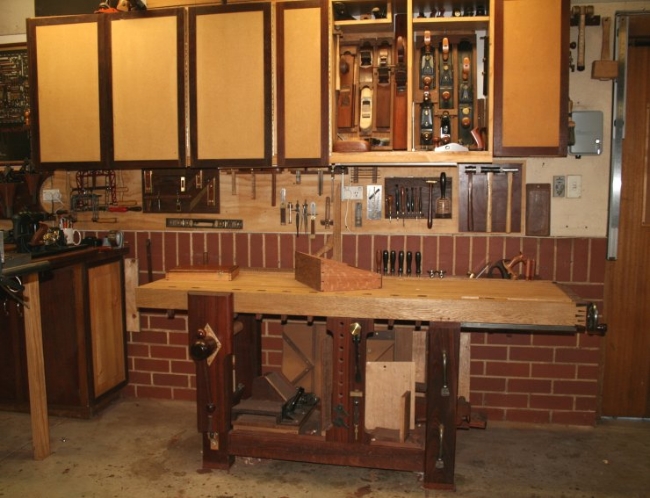
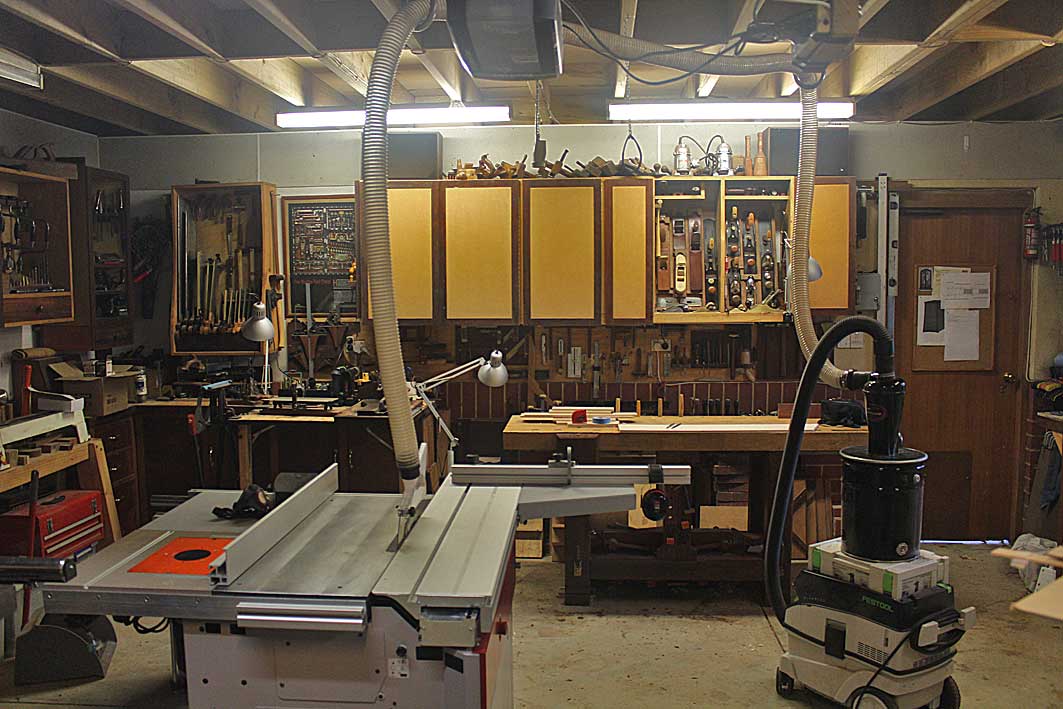

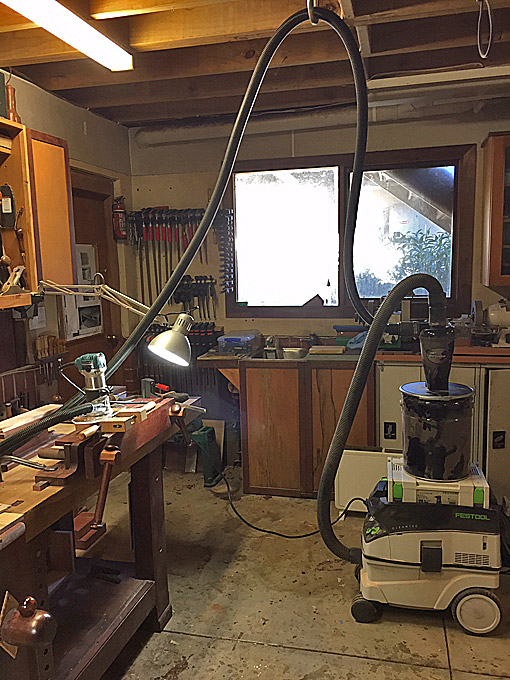




 Reply With Quote
Reply With Quote


 .
.








